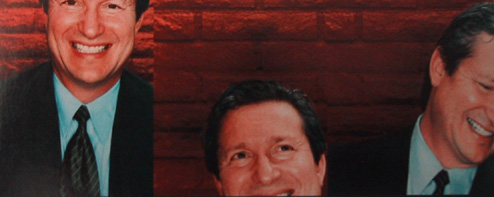 |
||
![]()
WORKPLACE
Five Rules for The Post-Boom
Some simple steps to keep you on the right path to a great career
By Neal Lenarsky
Back in the boom days of the 1990s, when there were many more job openings than people to fill them, a senior executive from a major corporation lamented that he’d just lost the chance to hire a talented marketing candidate because another company’s offer included a full-time chef at the company’s salad counter.
What a difference a bust makes. The employers are back in the driver’s seat, and job switchers have to learn to play the game anew. As an executive agent, I manage the careers of senior executives, many of them in tech industries, and I’m often privy to their most trying professional challenges. From my vantage point, I’ve seen some new rules emerge for job hunters.

1. The Rule of Ten: All hiring executives have at least 10 friends out of work. They will typically fill senior-level openings by first calling friends in their Rolodex. So if you needed a reminder about the importance of building and maintaining your professional network, this is it. Get onto as many “lists of 10” as possible.
2. Square pegs for square holes: Back in the days of the talent shortage, companies often hired people into jobs with relatively little experience for that particular task. They didn’t have much choice; they crossed their fingers and hoped the person would grow into the job. Now hiring managers can choose from candidates whose professional experience is exactly, 100 percent relevant for the position. It’s not a good time to switch careers.
3. It’s easier to be acquired than hired: The old wisdom was “Just get your foot in the door.” But even that’s not easy now, since companies have the luxury of taking long, hard looks at candidates before hiring them. One solution: develop some kind of business relationship with the company, such as pitching deals that are low-risk, high-reward for them. A client of mine developed a consulting agreement that would lead to an equity stake in the firm—and a permanent job—if he was successful. His plan worked. Consulting, once considered the last option for a corporate executive on the job market, has now become an avenue to getting hired.
4. Develop a taste for crow: A client became depressed during a job interview because the hiring executive he sat across from was a former subordinate of his. It’s a common occurrence. After all, with the flight by entrepreneurial types from corporations during the height of the dot-com boom, those left behind were often promoted—largely because they stayed. Like the tortoise competing against the hare, they are plodding toward the finish line with big smiles. In this job market, turn off any arrogance or hubris; there’s little time for gamesmanship. Position yourself positively; you may bypass them later on, but to get back in the race you must first get back inside.
5. Endurance counts: If you’re out of work, find someone to help you take a hard look inward. Evaluate your skills and experience, and market yourself into positions that are a near-perfect match—even if it means a step down in salary or title. Whether you’re in a job or out of a job, the most important rules remain the same: be smart and relentless about forging lasting partnerships, and have a work ethic of perseverance. Don’t wait for a career map; create your own.
LENARSKY, an agent for executives, is chairman of Los Angeles-based STI.
Newsweek, September 23, 2002